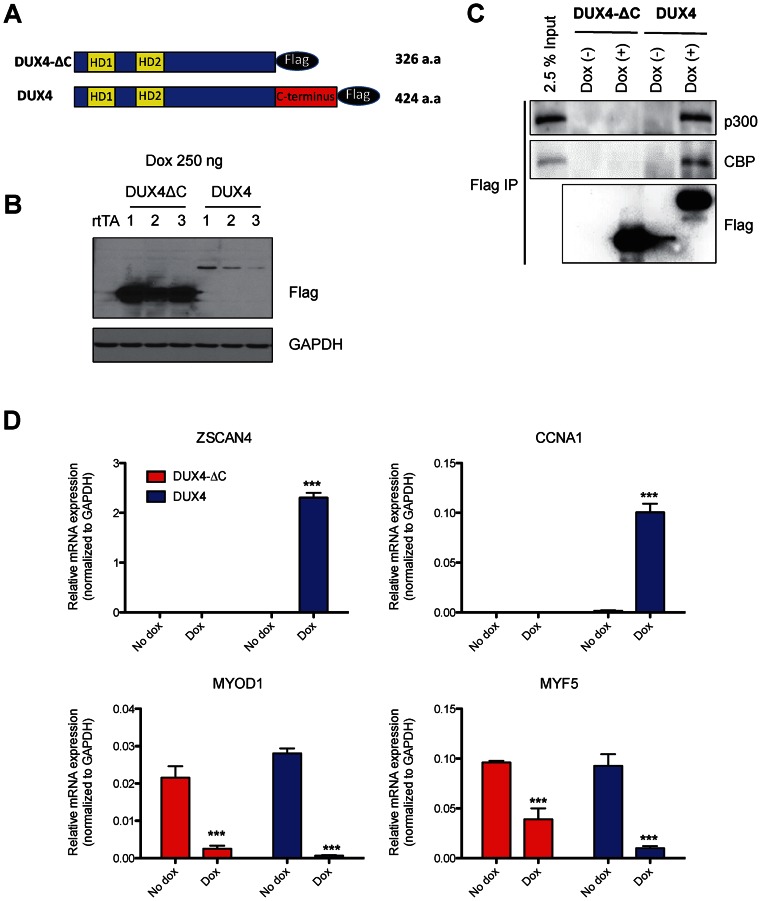Figure 3.
The C-terminal domain of DUX4 is required for p300 interaction and DUX4-mediated transcriptional activation, but not for repression of target genes. (A) Schematic diagram of DUX4-ΔC and full length DUX4. The C-terminal 98 amino acids were deleted in DUX4-ΔC. (B) Western blots indicating the level of DUX4-ΔC and DUX4 expression in three independent LHCN-M2 clonal cell lines. Whole cell lysates were prepared after 6 h of dox treatment. Note that the C-terminal deletion is expressed much more abundantly. (C) p300/CBP binds to the C-terminal domain of DUX4. DUX4-ΔC-flag and DUX4-flag were immunoprecipitated with flag antibody 6 h after 250 ng dox treatment. Endogenous p300 and CBP were coprecipitated with DUX4-flag, but not with DUX4-ΔC-flag. (D) RT-qPCR analysis of two upregulated genes (ZSCAN4 and CCNA1), and two downregulated genes (MYOD1 and MYF5) in DUX4-ΔC or DUX4 inducible LHCN-M2 cells 6 h after 250 ng/ml dox treatment. Expression is normalized to GAPDH (n = 3, three independent clones, error bars represent SEM, t-test: ***P < 0.001 versus no dox group). Note that the C-terminus is necessary for activation, but dispensable for downregulation of MYOD1 and MYF5.

